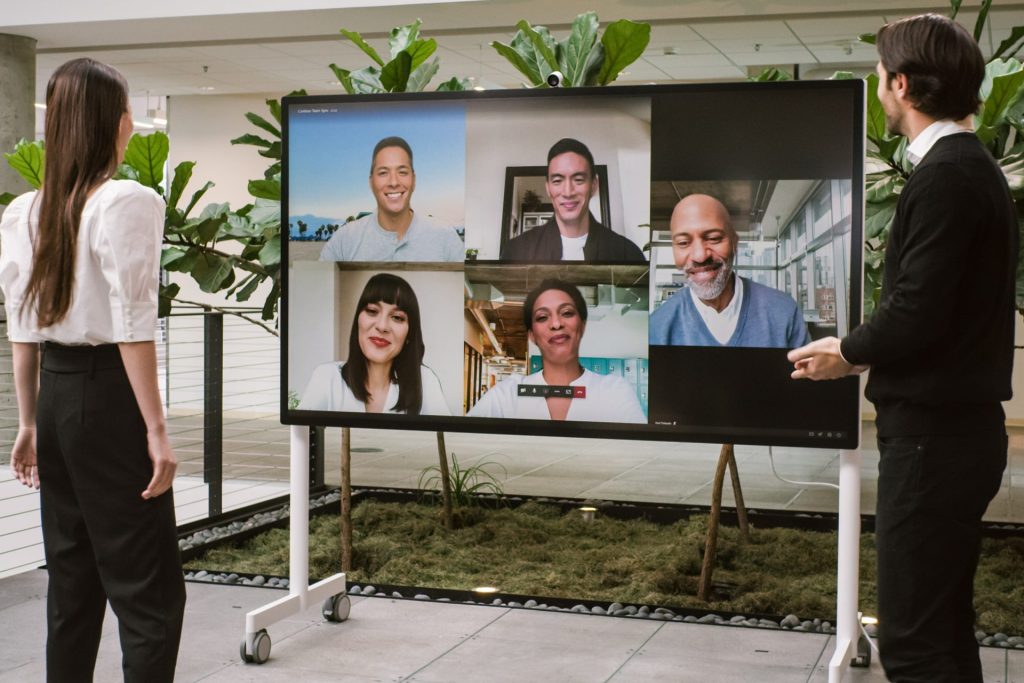
Technology has advanced so far over the past three decades that it’s difficult to believe that there was a time when computers weren’t household devices, when the internet didn’t exist, and when global communication was stunted. Microsoft has been a driving force in the advancement of technology, from the company’s earliest beginnings in 1975 to the apps and solutions that they develop and expand on today.
A Brief History Of Microsoft Corporation
Let’s take a look at some of the important moments for the company, and how Microsoft technologies have changed the world, and the way we work, for the better.
-
1975
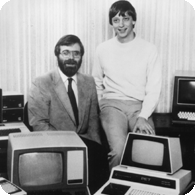
Childhood friends Bill Gates and Paul Allen founded Micro-Soft (short for Microprocessors and Software) on 04 April 1975, intending to produce software for one of the earliest personal computers – The Altair 8800. Allen left his programming job and Gates dropped out of Harvard University to focus on the company which was based in Albuquerque, New Mexico.
1981
IBM released their first personal computer in August 1981, with the MS-DOS 16-bit operating system. Despite it having no graphical interface and relying on users to type in commands to open programs, MS-DOS quickly became the most popular operating system, with computer companies licensing it for their own computers.
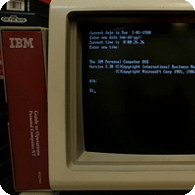
1983

Though he remained vice chairman and senior strategy advisor until 2000, Paul Allen left Microsoft in 1983 after being diagnosed with Hodgkin Lymphoma.
1986
1986 was a big year for Microsoft, as the company’s headquarters moved to Redmond, Washington and their stock went public. With stocks being sold at $21 a share, they managed to raise $61 million, over R2.3 billion in today’s market.
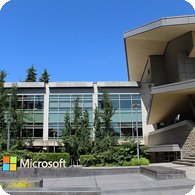
1989
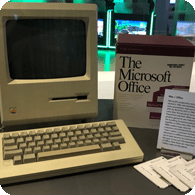
Another important year for Microsoft was 1989 they released the first version of Office – a suite of applications that included Microsoft Word, Excel, and PowerPoint. These programs would quickly become the go-to for word processing, managing spreadsheets, and creating presentations.
1995
While Windows 95 wasn’t the next operating system that Microsoft produced (Windows and Windows 3.0 being introduced after the uptake of MS-DOS), it was certainly their most popular. Personal computers were becoming ever more affordable, and the internet was becoming a global sensation, aided by Microsoft’s Internet Explorer and MSN, which the company also released in 1995. Gates pledged his (and Microsoft’s) commitment to supporting and enhancing the internet in December 1995.
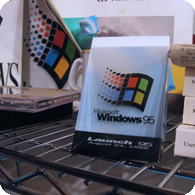
1997-2001

Always looking for ways to improve their operating systems, Microsoft released Windows 98, Windows 2000, and Windows XP in quick succession between 1998 and 2001. But it wasn’t only their operating systems that they had committed to developing.
Microsoft acquired the popular Hotmail emailing service in 1997, which they relaunched as MSN Hotmail to complement their web portal.
After 25 years as CEO of Microsoft, Bill Gates stepped down in 2000, but still maintained his position as chairman of the board of directors and Microsoft’s chief software architect. Steve Ballmer, who had been with the company since 1980, took over the role of CEO.
Along with the launch of Windows XP in 2001 came the release of Office XP. Through programs like Word, Excel, PowerPoint, and Outlook had been available to users throughout the ‘80s and ‘90s, Office XP saw a number of improvements over its predecessors, allowing for better collaboration and data recovery than ever before.
2001 also saw Microsoft launching their Xbox gaming console to compete with Sony’s PlayStation 2.
2003
Windows Server 2003 was released as a successor to Windows 2000 server. It included a number of new features and improvements, but one of the most important changes to security was that its default installation didn’t enable any of the server components. This meant that the machines were less vulnerable to attack right off the bat.

2007
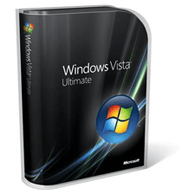
2007 saw the release of one of Microsoft’s least popular operating systems – Windows Vista. Despite it including a number of feature improvements, most users were left feeling that their machines were sluggish compared to the way they ran under Windows XP, largely because of the system’s much higher hardware requirements. This saw many users who had bought Vista choosing to downgrade back to Windows XP, and satisfaction with the operating system greatly reduced – a 2008 study showed that only 8% of Vista users were “very satisfied” with their experience, compared to 40% of Windows XP users.
2009
Following on Windows Vista, the success of which did not go quite according to plan, Microsoft released its Windows 7 operating system in 2009, which was seen as a vast improvement to its predecessor.
In the 14 years since the debut of Internet Explorer, there had been huge changes to the way that the internet worked, with search engines like Google dominating the web. In response, Microsoft launched its Bing search engine in 2009 to round-out Internet Explorer and compete with Google.
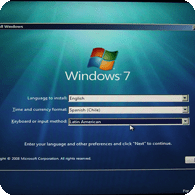
2010
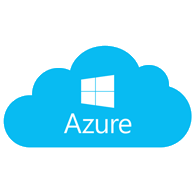
Though it had first been announced in 2008, February 2010 saw Microsoft introducing Azure – their flagship cloud computing platform for app management, Software as a Service (SaaS), Platform as a Service (PaaS), and Infrastructure as a Service (IaaS) solutions. This provided businesses with access to over 600 virtual services across Microsoft data centres around the world.
2011
Google’s search engine wasn’t the only area of competition between the two companies. As Google Apps was growing in prominence, Microsoft launched their own cloud-based platform for the Office apps that users had grown used to. Office 365 was launched in 2011 as “an always-up-to-date cloud service” which included SharePoint.
In 2011 Microsoft also acquired Skype and included Skype For Business, which became known as Lync, in the Office 365 platform.
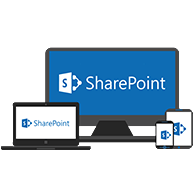
2012

With the failure of Microsoft Vista truly behind them, Microsoft launched its Windows 8 operating system in 2012. However, this once again proved to be less successful than anticipated. Despite making improvements to the touch computing experience, the interface was largely criticised, and user satisfaction dropped to its lowest point since the release of Vista.
But Windows 8 wasn’t the only stride that Microsoft made in 2012. On top of acquiring Yammer and releasing updates for Windows Server and Visual Studio, the company also launched its own brand of laptops and devices under the Surface umbrella. This also goes a long way to explaining the Windows 8 operating system’s focus on touch screens. Many of the devices were hybrid 2-in-1 laptops, tablets, and interactive screens which required the advanced touchscreen interface and technology.
2013
Though both Outlook and Hotmail had been part of Microsoft’s solutions since 1997, the two remained separate until 2013, when Microsoft phased out Hotmail and launched Outlook.com as their office email solution. Outlook does, of course, still operate as a stand-alone desktop app, but with the merging of the two platforms, users could now manage their Microsoft mailboxes, calendars, contacts, and tasks through their browser as well, making it a more holistic, cloud-based service.
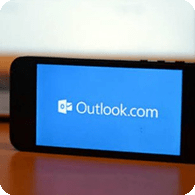
2014

After 14 years as CEO of Microsoft, Steve Ballmer stepped down in 2014, and Satya Nadella was named the new Chief Executive Officer. Nadella joined Microsoft in 1992 and led a number of major projects on the company’s behalf. It was under his guidance that Microsoft revised its mission statement. Where previously it had been Bill Gates’ mission to put “a computer on every desk and in every home”, it became the company’s mission to “empower every person and every organisation on the planet to achieve more”.
Inspired by Nadella, and encouraged to embrace the technologies of its competitors, 2014 also saw Microsoft launching its Office apps across more platforms including iPad and Android tablets.
2015
Putting the poor reception of Windows 8 in the past, Microsoft launched Windows 10 in July 2015 to great reception. It was released as a free upgrade for existing Windows 8 and Windows 8.1 users and featured a less touch-screen-oriented interface, which was praised by critics and users alike.
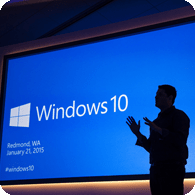
Windows 10 also included Microsoft’s new Edge browser as a replacement for Internet Explorer, which had for many years been seen as the slowest of the available browsers despite Microsoft’s efforts to improve it. Edge was seen as a big improvement over IE, but remains one of the browsers with the lowest uptakes, partially due to the negative experience that many users had when using its predecessor.
As another enhancement to user experience, and falling in line with the company’s revised mission of empowering people and businesses to achieve more, Microsoft released Delve Analytics, which was later rebranded to MyAnalytics, and to Microsoft Viva in 2021. This provided a platform for users to gain a greater understanding of how their time was being spent and when they were most productive, “ultimately helping you to work smarter, not harder”. Though this was only available to premium Microsoft users in 2015, in later years it would become available as part of all Microsoft 365 subscriptions.
2017

With many companies beginning to embrace remote work and employees changing the way that they work, platforms like Slack were becoming more and more popular. So much so, in fact, that Microsoft considered bidding to acquire the communication tool in 2016. However, the company decided to go in another direction, instead of launching its own competitor to Slack in the form of Microsoft Teams in 2017. The platform not only integrates with Office 365 apps but incorporates the video technology that Microsoft had acquired in their purchase of Skype and Skype for Business six years earlier.
2020
2020 was a difficult year for businesses around the world as the impacts of the Coronavirus and enforced lockdowns were felt by employers and employees alike.
The start of 2020 saw Microsoft making commitments to sustainability, announcing their plan to become carbon negative by 2030 and to replenish more water than the company consumes within the same timeframe.

Where Microsoft solutions had, in the past, largely been business-oriented, 2020 saw Microsoft introducing Personal and Family subscriptions to their Microsoft 365 platform, which had recently been rebranded from Office 365. This more human approach to their platform couldn’t have come at a better time, as employees around the world were being forced to work from home due to COVID-19 inflicted lockdowns. The new subscriptions introduced a way to balance work and home life all through the same platform via cloud storage and app access for up to 6 users (each using up to 5 devices).
2021
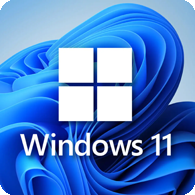
2021 saw further advances as Microsoft released its latest operating system, Windows 11. While the reception for the new system has been largely positive, much like Windows Vista the operating system does have higher hardware requirements, seeing a slower uptake in adoption than Windows 10 experience.
Microsoft also unveiled a new Windows 365 service – a virtual desktop that can be used by users across platforms like Apple, Android, and Linux. This takes Satya Nadella’s commitment to embrace competitor technologies a step further, meaning that users don’t have to choose between Microsoft or Apple products, for example, but can make the best of both worlds.
What Does The Future Hold?
Microsoft constantly adapts to changes in the modern workplaces and continues to focus on empowering individuals and companies to reach their full potential. Their commitments to sustainability, becoming water positive and zero waste by 2030, show that their commitment far exceeds just providing users with a single platform and solution. They want to make the world a better place and are taking strides to do exactly that.
As a Microsoft Gold Partner, Solid Systems is looking forward to many, many more years of innovation and finding new ways of working smarter, not harder.
Popular Searches
- 15 Ways Microsoft Tools Help You Work Smarter
- Productivity Tools for Office 365
- MS 365 Valuable Tools
- What is Azure AD?
- SharePoint Migration Checklist
- Choose the perfect MS 365 plan
- Compare Office 365 Plans
- What Is MS Intune?
- Beginner's Guide to Microsoft 365 Groups
- Common MS Teams Problems & their Solutions





